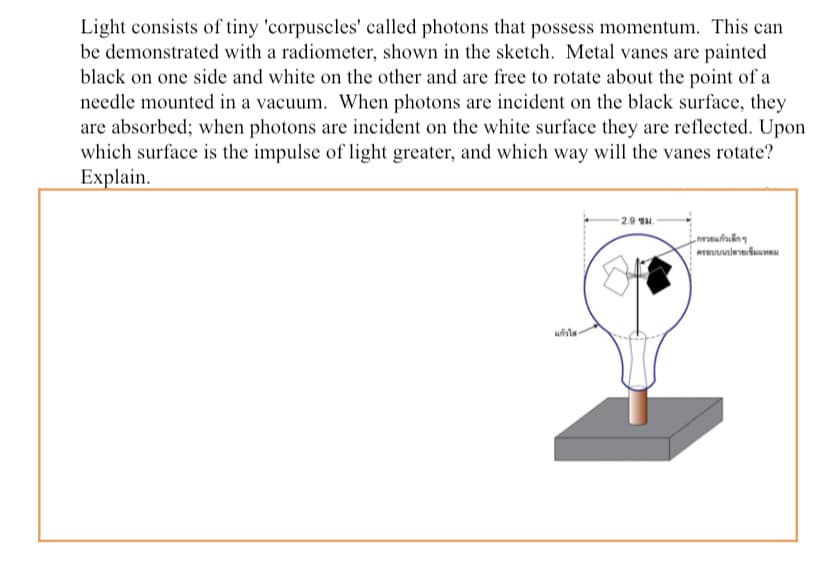Light consists of tiny 'corpuscles' called photons that possess momentum. This can be demonstrated with a radiometer, shown in the sketch. Metal vanes are painted black on one side and white on the other and are free to rotate about the point of a needle mounted in a vacuum. When photons are incident on the black surface, they are absorbed; when photons are incident on the white surface they are reflected. Upon which surface is the impulse of light greater, and which way will the vanes rotate? Explain. 2.9 H. ครอบบนปลายเข็มแหลม
Light consists of tiny 'corpuscles' called photons that possess momentum. This can be demonstrated with a radiometer, shown in the sketch. Metal vanes are painted black on one side and white on the other and are free to rotate about the point of a needle mounted in a vacuum. When photons are incident on the black surface, they are absorbed; when photons are incident on the white surface they are reflected. Upon which surface is the impulse of light greater, and which way will the vanes rotate? Explain. 2.9 H. ครอบบนปลายเข็มแหลม
Related questions
Question

Transcribed Image Text:Light consists of tiny 'corpuscles' called photons that possess momentum. This can
be demonstrated with a radiometer, shown in the sketch. Metal vanes are painted
black on one side and white on the other and are free to rotate about the point of a
needle mounted in a vacuum. When photons are incident on the black surface, they
are absorbed; when photons are incident on the white surface they are reflected. Upon
which surface is the impulse of light greater, and which way will the vanes rotate?
Explain.
2.9 H.
กรวยแก้วเล็ก ๆ
ครอบบนปลายเข็มแหลม
Expert Solution
This question has been solved!
Explore an expertly crafted, step-by-step solution for a thorough understanding of key concepts.
This is a popular solution!
Trending now
This is a popular solution!
Step by step
Solved in 2 steps with 1 images
